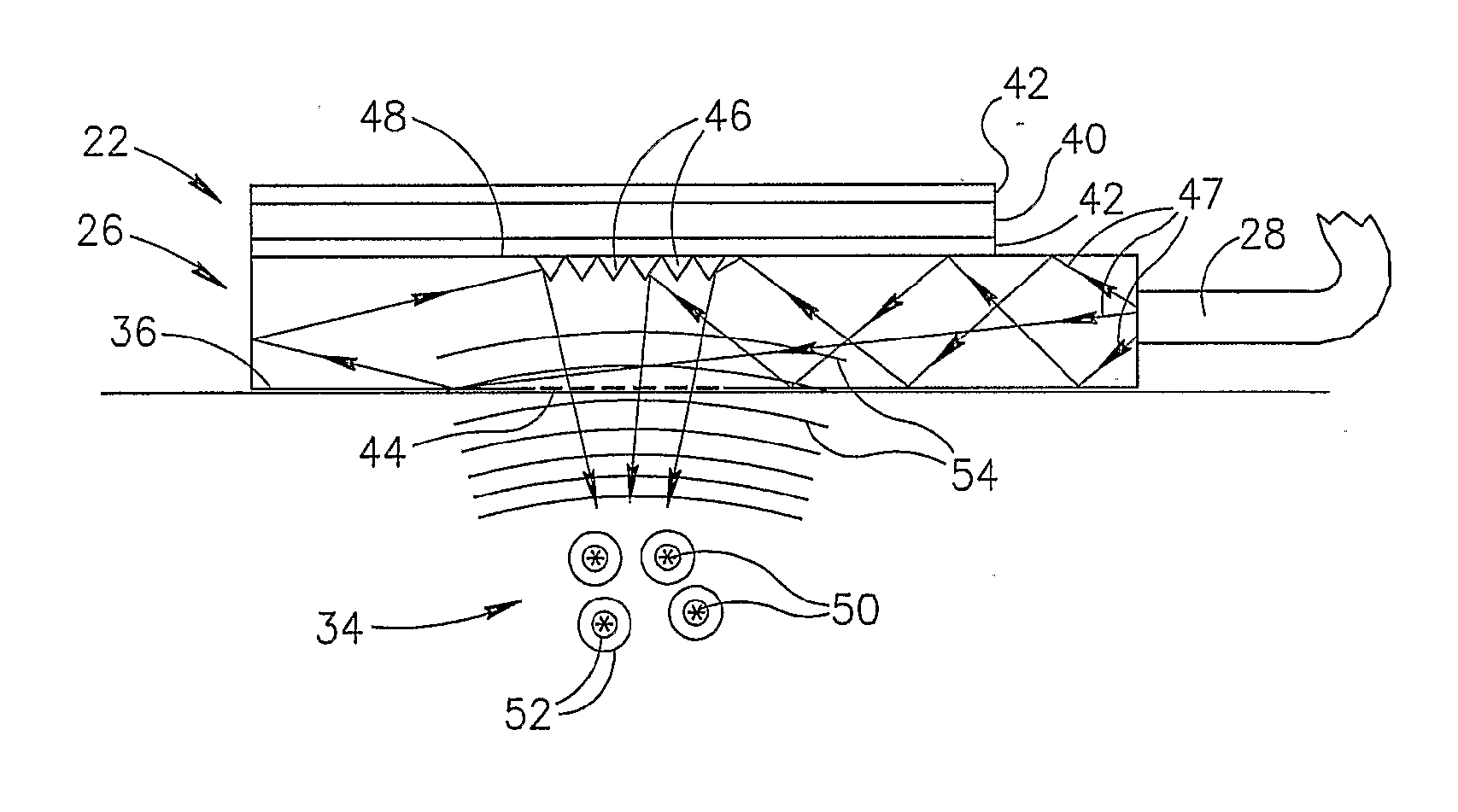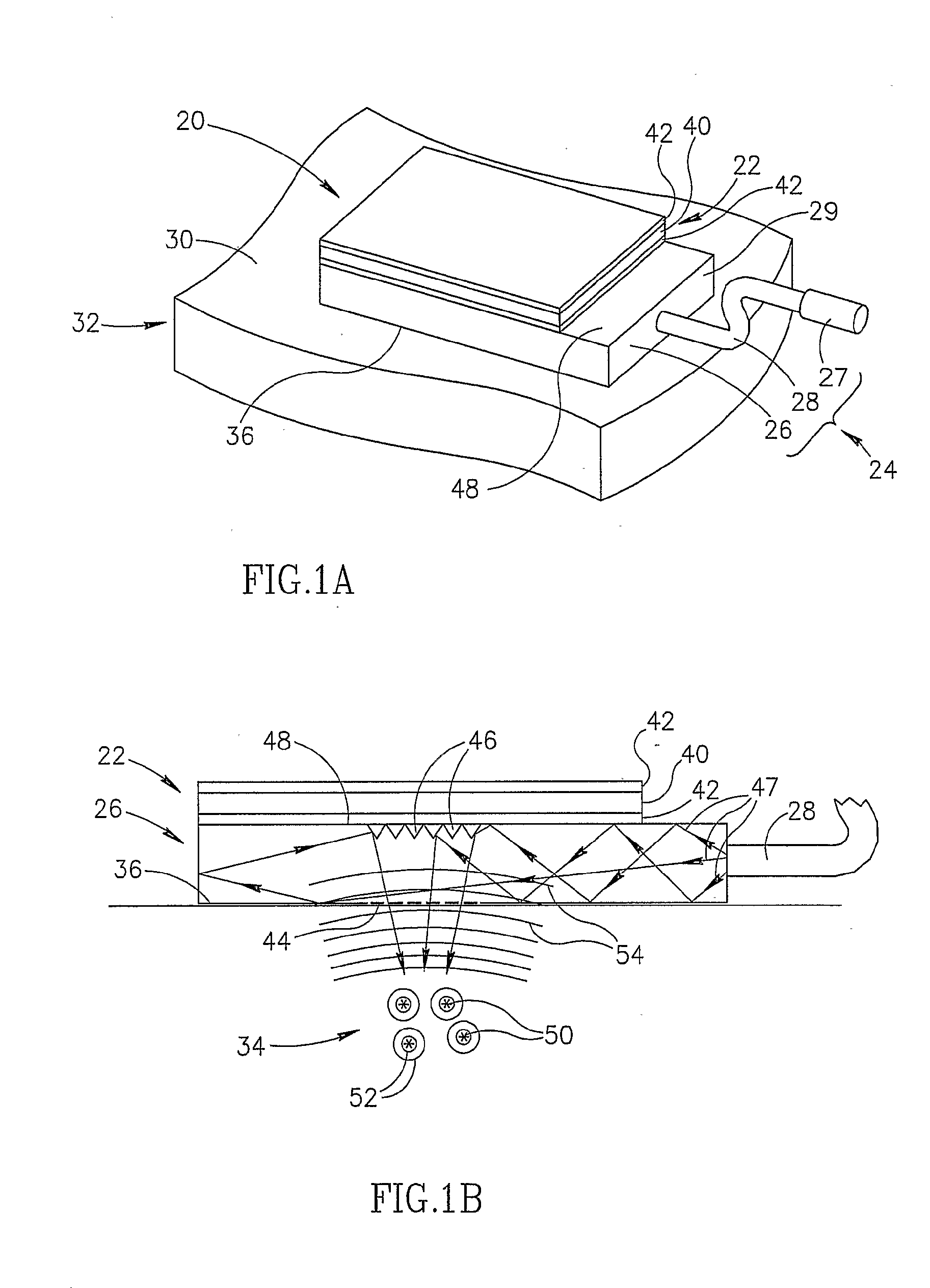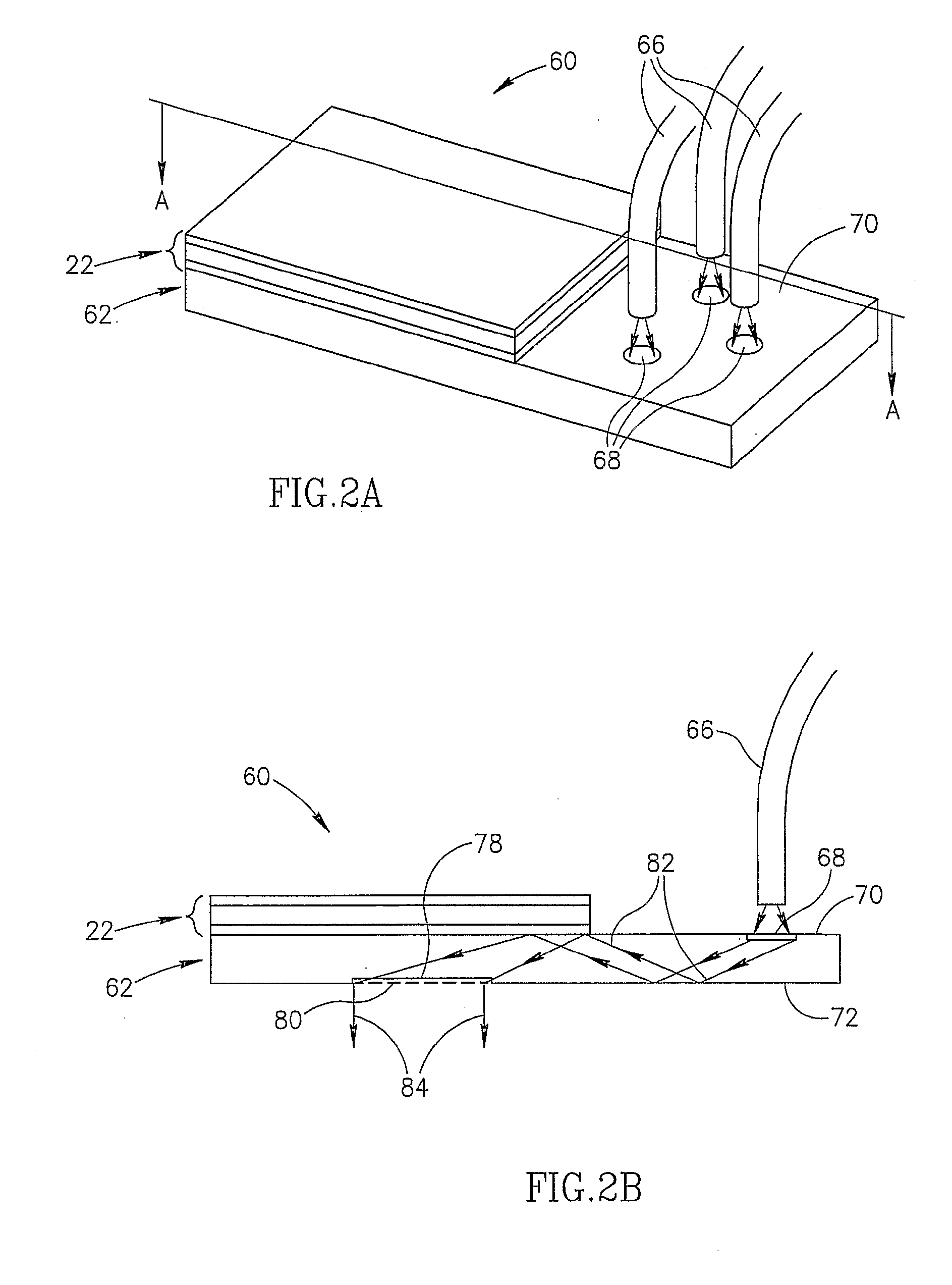Photoacoustic Sensor
a technology of photoacoustic waves and sensors, applied in the field of photoacoustic sensors, can solve the problems of compromising the sensitivity of the transducer for detecting photoacoustic waves and determining their origins, and generally affecting the sensitivity of at least one transducer, so as to reduce aiming constraints, reduce sensitivity, and reduce the effect of output apertur
- Summary
- Abstract
- Description
- Claims
- Application Information
AI Technical Summary
Benefits of technology
Problems solved by technology
Method used
Image
Examples
Embodiment Construction
[0036]FIGS. 1A and 1B schematically show a perspective view and a cross-section view respectively of a photoacoustic sensor 20, in accordance with an embodiment of the present invention.
[0037] Photoacoustic sensor 20 comprises, at least one, optionally planar, acoustic transducer 22 and a light provider 24. Light provider 24 comprises a planar light pipe 26 and optionally an optic fiber 28 coupled to a light source 27 and to the light pipe along an edge surface 29 of the light pipe. Planar light pipe 26 is bonded to at least one transducer 22, which by way of example comprises a single transducer. Photoacoustic sensor 20 is schematically shown coupled to a surface 30 of body 32 so as to generate and sense photoacoustic waves in a region 34 (shown in FIG. 1B) of the body. Coupling of the photoacoustic sensor to surface 30 is achieved by coupling a bottom surface 36 of light pipe 26 to surface 30. Optionally, coupling of the light pipe to surface 30 is aided by use of a suitable gel ...
PUM
 Login to View More
Login to View More Abstract
Description
Claims
Application Information
 Login to View More
Login to View More - R&D
- Intellectual Property
- Life Sciences
- Materials
- Tech Scout
- Unparalleled Data Quality
- Higher Quality Content
- 60% Fewer Hallucinations
Browse by: Latest US Patents, China's latest patents, Technical Efficacy Thesaurus, Application Domain, Technology Topic, Popular Technical Reports.
© 2025 PatSnap. All rights reserved.Legal|Privacy policy|Modern Slavery Act Transparency Statement|Sitemap|About US| Contact US: help@patsnap.com



